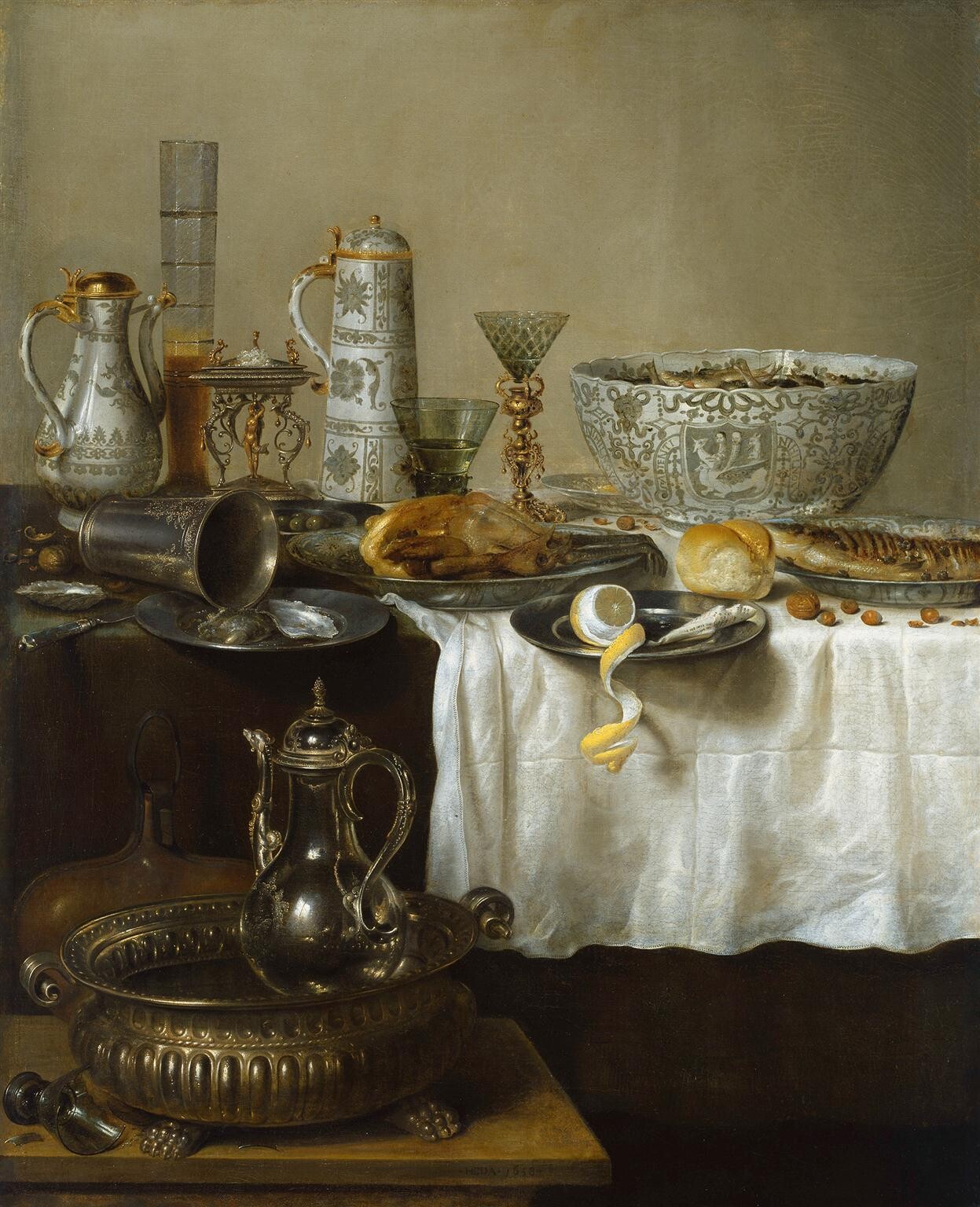Abundance?
»Those who show off, remain – is perhaps what comes to mind when we see readily displayed status symbols or the presentation of excessive wealth.
People who allegedly can afford luxury often also like to show it: fast cars, stylish clothes, extensive holidays or expensive tableware and sumptuous food – as depicted in this ornate still life from the 17th century. What for some is luxury, for others is overabundance. Whoever at the sight of such ostentatiously exhibited riches thinks of waste probably has in mind the given reality at the time the image was created: a time in which many have little and only a few have much. But couldn’t this motif – in view of the extravagant depiction of food, beverages and dishes – perhaps also be understood as an admonitory lesson for the viewer? Especially since the silver cup, against the backdrop of art-historical interpretation, can be regarded as an allegory of the transience of life, picking up on vanitas symbols.
One thing is certain: not every still life, even when it features wealth, intends to demonstrate abundance or boast. As illustrated by the vanitas symbolism in this work: in art, there is often more behind the apparent than what is revealed at first sight.
Jasper Warzecha (former research assistant)
